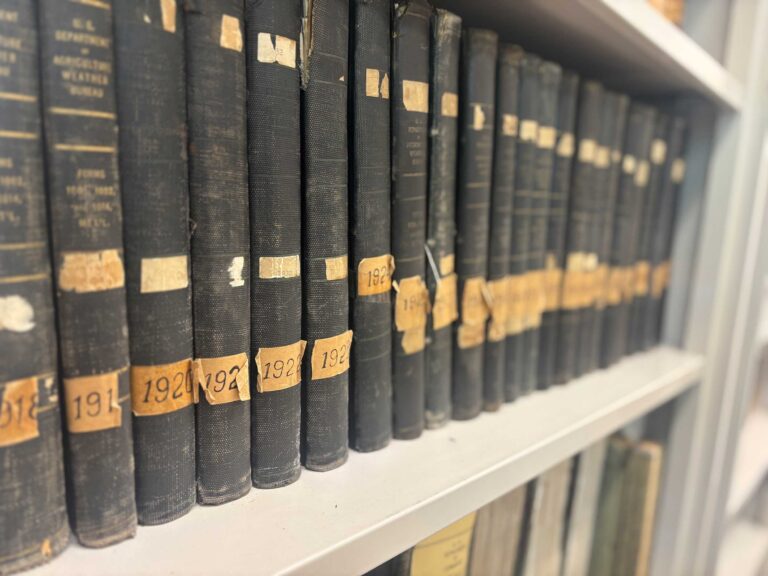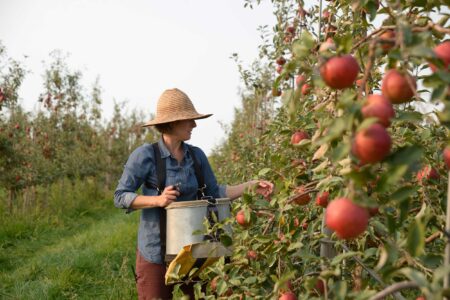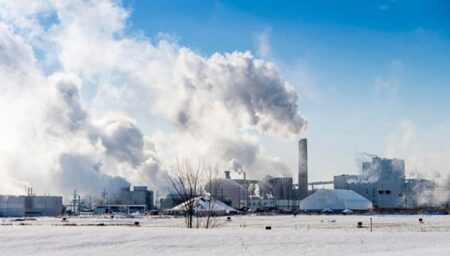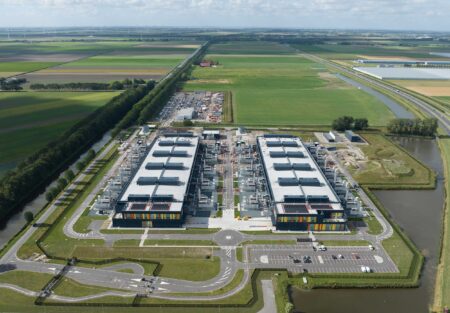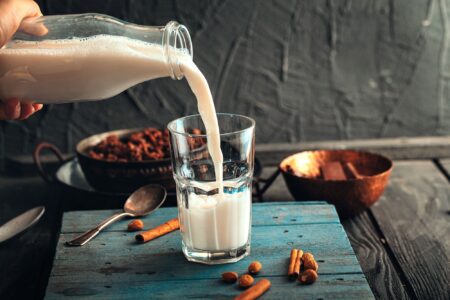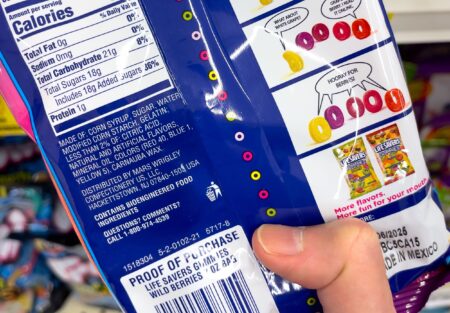COLUMBIA, Mo. — Missouri State Climatologist Zack Leasor works in an office divided by time.
On the right sits the past — dozens of faded, scratched leather-bound books containing over 100 years of handwritten climate data. One page — July 15, 1936 — shows a high temperature of 111 degrees Fahrenheit, the then-second-hottest day on record for the City of Columbia.
“Back then, because of the lack of technology, a climatologist was somebody just skilled enough to use [weather] instruments, get the measurements, record them well,” he said. “That took a lot of time.”
But today, Leasor spends far more time on the left side of his office, behind his computer. His dual monitors are often displaying weather models: precipitation, stream flow, soil moisture, crop conditions, and reservoir levels. He uses this data to, among other things, determine if there’s drought in Missouri.
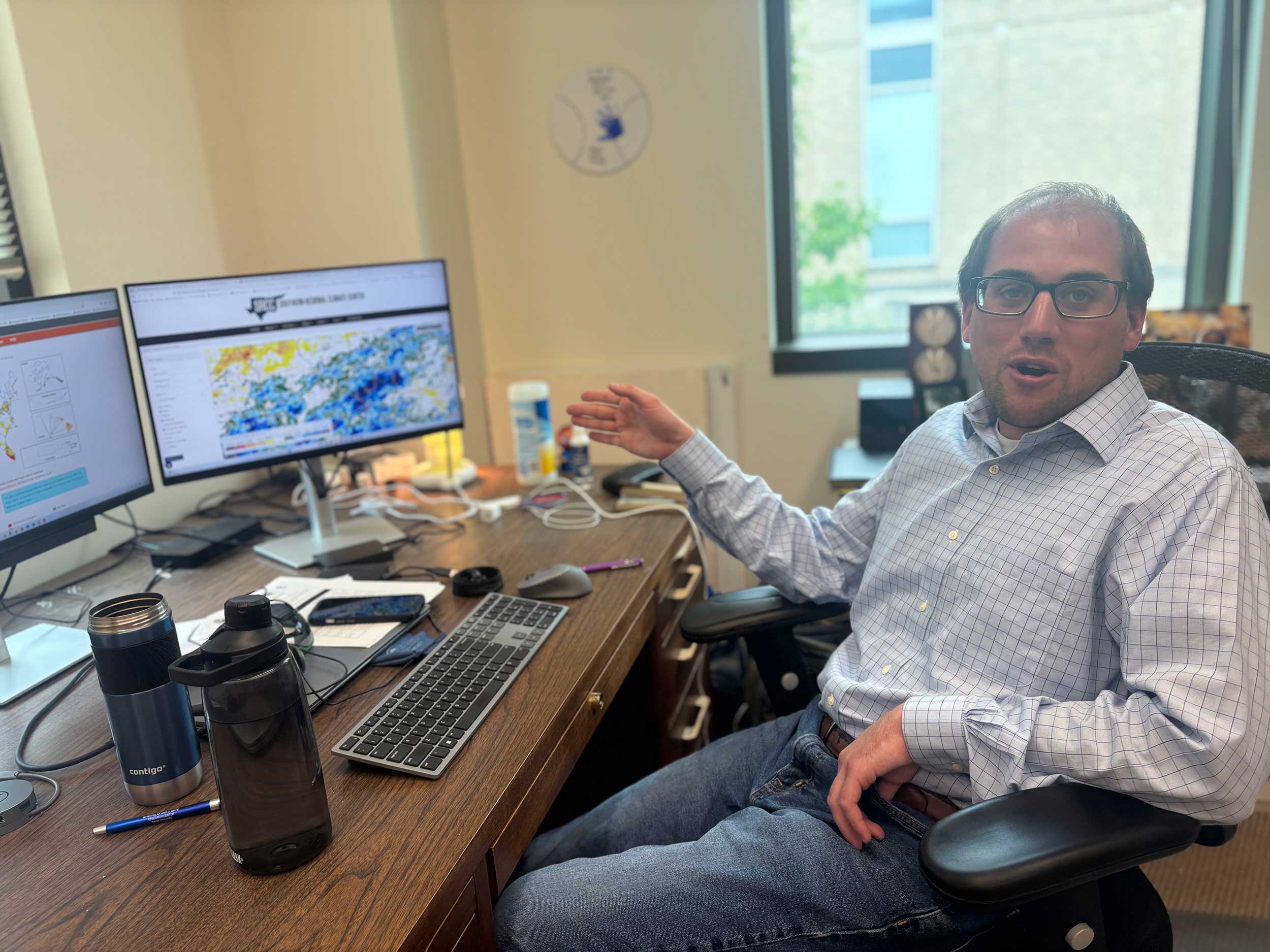
The job of a climatologist has changed a lot in a hundred years. The climate has too.
And those changes are making it harder to tell what is or isn’t a drought. That’s because drought is often defined as “drier-than-normal.” But if climate change is shifting what’s considered “normal”, what does that mean for drought?
A tricky concept
The National Academies of Sciences, Engineering, and Medicine is working on a study to answer that question. The query was originally brought to the independent nonprofit research organization by the National Integrated Drought Information System, a group within the National Oceanic and Atmospheric Administration.
Joel Lisonbee, a senior associate scientist at the Cooperative Institute for Research in the Environmental Sciences, or CIRES, at the University of Colorado in Boulder was part of that team, and he’s been studying this problem for years.
In 2023, he helped lead a workshop of more than a hundred stakeholders and experts in Boulder, co-hosted by NOAA, NIDIS and the United States Department of Agriculture. Its purpose was to discuss how to assess drought in a changing climate.
“We identified a little over 170 different either priority actions that need to happen or research questions that need to be answered for us to really tackle this overall problem correctly,” Lisonbee said.
That’s because the answer to what to call “normal,” and the answer to what drought even is, is situational.
In a 1985 study, researchers found over 150 published definitions of drought. Drought has different meanings depending on who is asking, where, for what purpose and especially what time frame they’re using. Because the climate has been changing, Lisonbee said what’s considered “normal” changes depending on whether you’re using a 10, 30, or 100 year average.
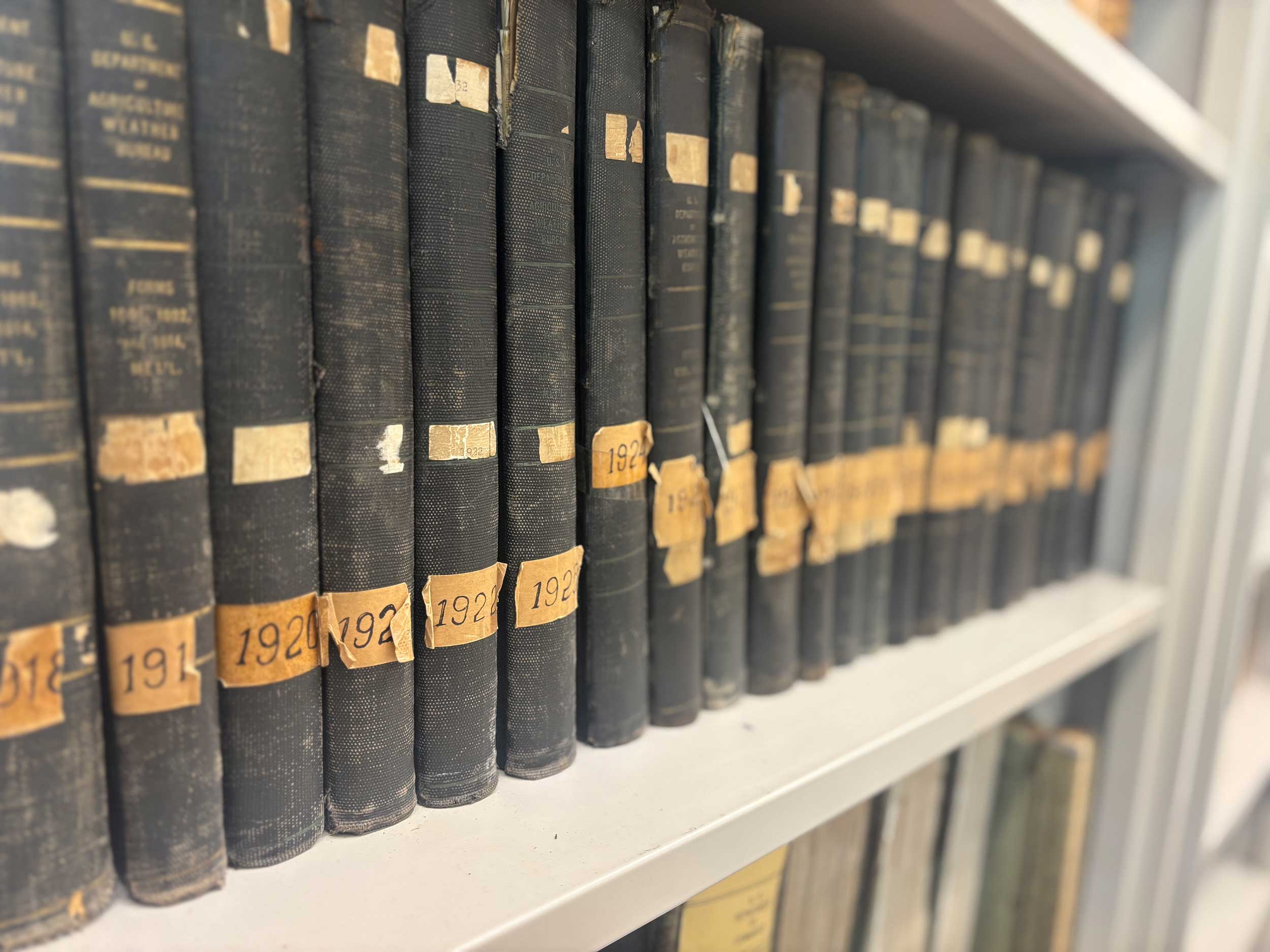

Lisonbee’s research found that while a 30-year reference period is the standard for climate data, drought assessment typically uses a “full period of record” — that would include data from the dusty, century-old books in Leasor’s office. A larger sample size reduces uncertainty. But climatologists may end up comparing today’s weather to a baseline that isn’t representative of today’s climate. Which one is the correct normal?
“Right away we discovered that those were the wrong questions to ask,” he added. “Rather, what we should be asking is, when should drought be defined using all available data? When should we use the whole climate record? There’s not one answer, and the correct answer will really depend on why you’re assessing drought in the first place.”
Stakes are high for understanding and naming drought
There are a million reasons to study drought, and the definition one uses can depend on their reason for assessing it in the first place.
For instance, climatologists study long-term trends in weather in order to understand past and future patterns. They would be interested in how dry things were 100 years ago to track the impact of climate change, so a large reference period makes sense.
If conditions are consistently getting hotter and drier, as they are in the American Southwest, for example, “drought” may not be the best way to define it. Maybe it’s a new normal.
“It’s really a question of, is this drought, or what we call aridification, which is the entire climate getting drier?” Leasor said. In that case, the drier baseline would mean a drier bar for what qualifies as a drought.
Climate trends also have implications for businesses and cities trying to plan for the future.
“If you’re in a place where the precipitation is declining, such as far western Texas or New Mexico, or possibly you’re relying on stream or river flow to irrigate your crop, and that water resource is declining, you want to be able to think ahead and be aware of the average amount of water you have access to,” Lisonbee said. In those cases, it may make sense to use a shorter baseline to reflect recent trends, rather than include data from a century ago, when the climate was different.
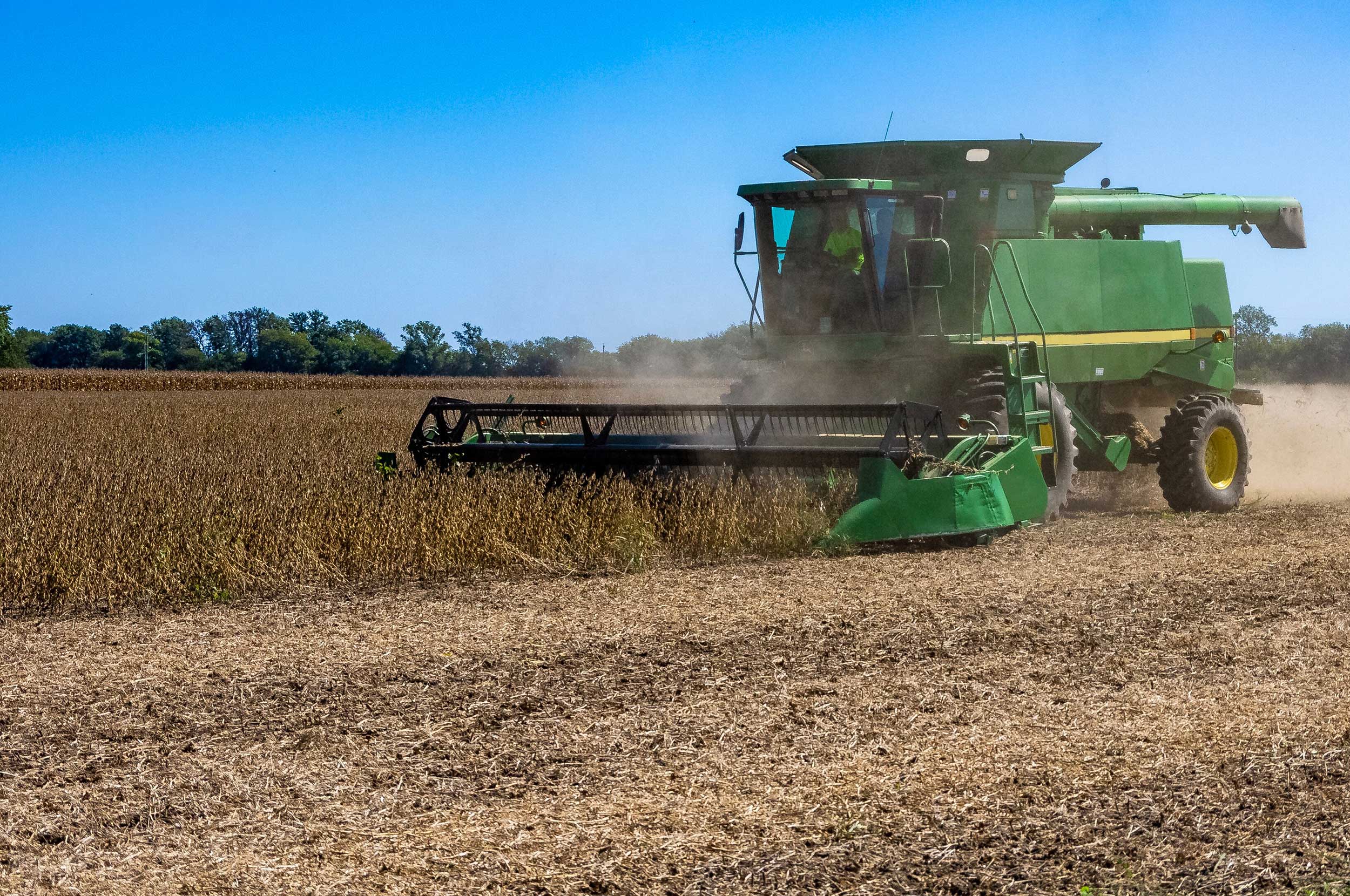

Meanwhile, in Missouri, many farmers are much more concerned about crop conditions today.
“Over the past three growing seasons, we’ve had severe and extreme drought conditions,” Leasor said, referring to the three growing seasons of 2022-2024 where the state saw persistent drought conditions.
How droughts are classified during such periods matters to farmers’ pocketbooks.
One of the tools used to assess drought is the U.S. Drought Monitor. Drought Monitor authors update a nationwide map weekly to track drought and its severity with the help of local experts like Leasor.
The map ranks drought on a scale of D0, or abnormally dry, to D4, exceptional drought. Federal drought relief policies, like the Livestock Forage Protection Program, tie funds directly to these designations.
For example, farmers qualify for drought relief payments if they are in a county that experienced eight consecutive weeks of “severe drought”or D2. With such a specific timeline and pay scale, small changes in assessment can be the difference between getting money or going without.
“Getting that drought assessment right gives us confidence that those drought relief mechanisms and drought adaptation mechanisms and even drought mitigation mechanisms are correct,” Lisonbee said. “We’re talking real dollars, taxpayer dollars.”
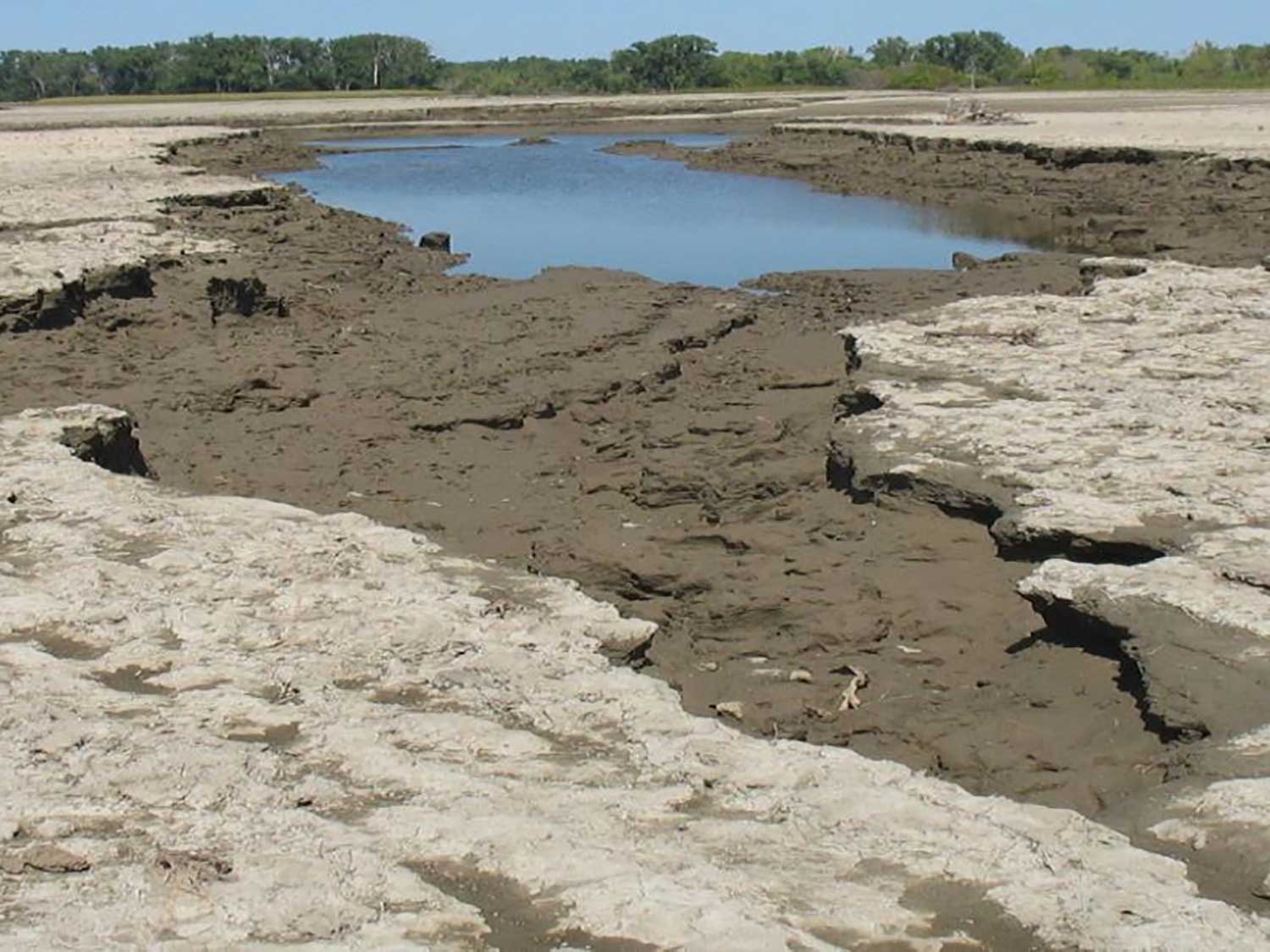

The National Academies study is still in its early stages, with the committee’s second meeting scheduled for July 15.
Leasor said this issue is something he’s been thinking about for a long time. He took part in the workshop led by Lisonbee, and it’s in the back of his mind every week as he sends along his Drought Monitor recommendation.
“Over the past 30 years, drought research has changed,” he said. Prior to 1999, there was no U.S. Drought Monitor, fewer measures of weather conditions and no tools that tried to compile them into an accurate assessment of drought.
“Now we’re kind of in a new era where we have tons of indices and data sets and knowledge, and we’re kind of shifting research into ‘Well, now that we’re looking at this, we find some deficiencies, and how can we improve?’” he added.
This story is part of a series called Down the Drain from the Mississippi River Basin Ag & Water Desk, an independent reporting network based at the University of Missouri in partnership with Report for America, with major funding from the Walton Family Foundation.


:max_bytes(150000):strip_icc()/Updated3BigThings-6-farm-aerial-4-c992386464114b83a6eff4628bfcd1d3.jpeg)
:max_bytes(150000):strip_icc()/102195214_beef_cattle-5c2eb9f466fb4b5cb550eb06fd3405bc.jpg)
:max_bytes(150000):strip_icc()/8293232288_8da55cc72e_o-b324a9331b0a48b487dd867154d53c50.jpg)


